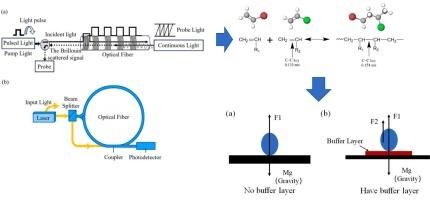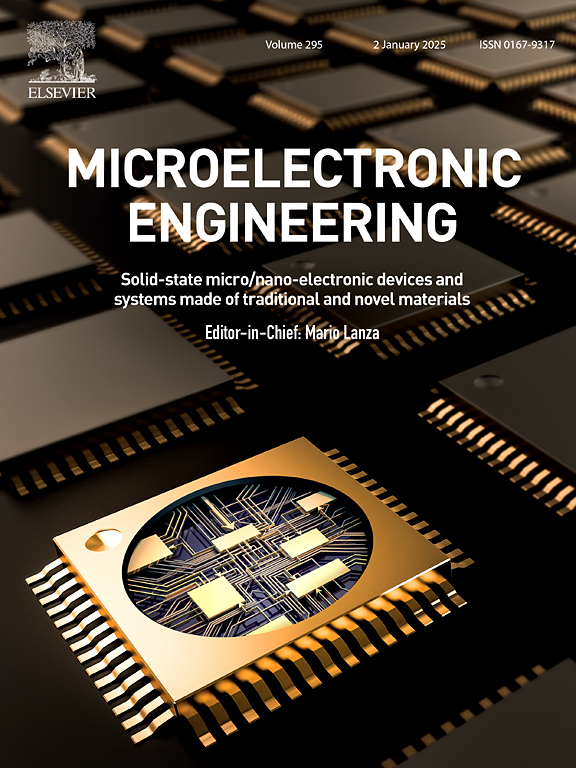光纤陀螺仪应力突变研究
IF 3.1
4区 工程技术
Q2 ENGINEERING, ELECTRICAL & ELECTRONIC
引用次数: 0
摘要
光纤环的温度变化灵敏度是制约光纤陀螺仪在高精度领域工程应用的瓶颈问题。目前,常用四极对称和八极对称等技术来增强光纤环的长度和位置对称性,从而实现外部温度变化的相互抵消。本文从工程应用出发,重点研究了光纤环的常规对称性,重点研究了影响光纤环应力对称性的工艺因素。结果表明,采用传统的四极和八极对称缠绕方式时,光纤环的底层存在明显的应力突变。通过对固化机理和固化前后应力曲线的分析,发现光纤环的张力受到影响。光纤和骨架之间的模量差异共同导致底层应力曲线的突然变化。提出了一种具有批量生产工艺的缓冲层设计方法,可以有效地抑制光纤环中心区域的应力突变。采用该工艺光纤环的陀螺仪产品在保证振动性能的同时,温度和偏置不稳定指数提高了29%。成功实现了0.01°/h光纤陀螺仪的批量生产,完成了3000多轴的生产研制,具有重要的工程应用价值本文章由计算机程序翻译,如有差异,请以英文原文为准。

Research on stress mutation of fiber optic gyroscope
Temperature-variation sensitivity of fiber-optic rings is a bottleneck problem that restricts the engineering application of fiber optic gyroscopes in high-precision fields. At present, techniques such as quadrupole-symmetry and octupole-symmetry schemes are commonly used to enhance the length and position symmetry of fiber optic rings, achieving mutual cancellation of external temperature changes. This article is based on engineering applications, focusing on the conventional symmetry of fiber optic rings, and focusing on the process factors that affect the stress symmetry of fiber optic rings. It is found that there is a significant stress mutation in the bottom layer of the fiber optic ring using the conventional four pole and eight pole symmetric winding schemes. By analyzing the curing mechanism and the stress curve before and after curing, it is found that the tension of the fiber optic ring is affected. The difference in modulus between the fiber optic and the skeleton jointly causes a sudden change in the underlying stress curve. This paper proposes a buffer layer design method with batch-producible process, which can effectively suppress stress mutations in the central area of the fiber optic ring. The gyroscope products equipped with this process fiber optic ring can improve the temperature and bias instability index by 29 % while ensuring vibration performance. It has successfully achieved batch production of 0.01°/h fiber-optic gyroscopes, completed the production and development of over 3000 axes, and demonstrated significant engineering application value
求助全文
通过发布文献求助,成功后即可免费获取论文全文。
去求助
来源期刊

Microelectronic Engineering
工程技术-工程:电子与电气
CiteScore
5.30
自引率
4.30%
发文量
131
审稿时长
29 days
期刊介绍:
Microelectronic Engineering is the premier nanoprocessing, and nanotechnology journal focusing on fabrication of electronic, photonic, bioelectronic, electromechanic and fluidic devices and systems, and their applications in the broad areas of electronics, photonics, energy, life sciences, and environment. It covers also the expanding interdisciplinary field of "more than Moore" and "beyond Moore" integrated nanoelectronics / photonics and micro-/nano-/bio-systems. Through its unique mixture of peer-reviewed articles, reviews, accelerated publications, short and Technical notes, and the latest research news on key developments, Microelectronic Engineering provides comprehensive coverage of this exciting, interdisciplinary and dynamic new field for researchers in academia and professionals in industry.
 求助内容:
求助内容: 应助结果提醒方式:
应助结果提醒方式:


